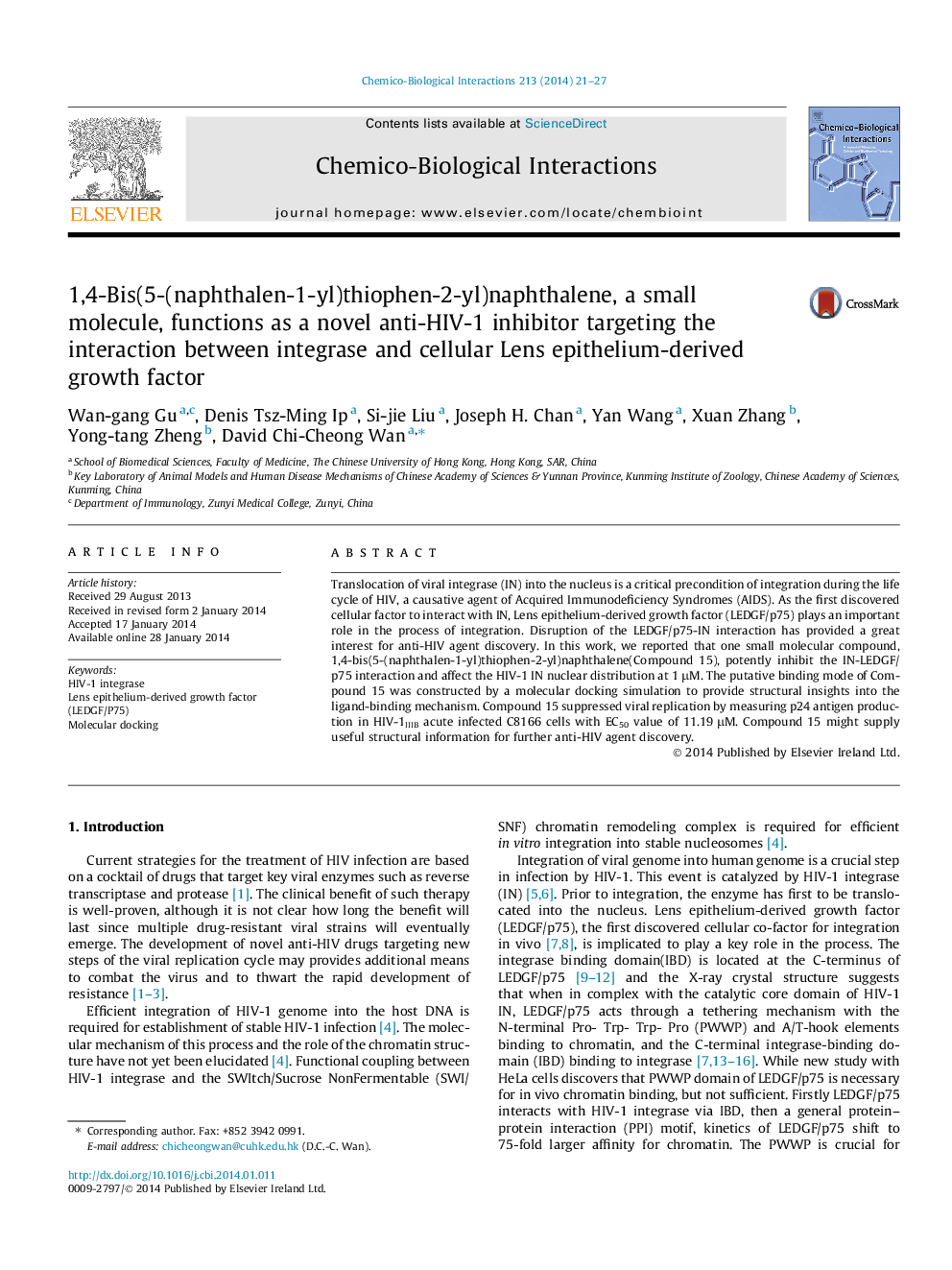| Article ID | Journal | Published Year | Pages | File Type |
|---|---|---|---|---|
| 2580528 | Chemico-Biological Interactions | 2014 | 7 Pages |
•Compound 15 potently inhibited the HIV-1 IN nuclear translocation at 1 μM.•The binding mode of Compound 15 provided valuable information for drug design.•Compound 15 suppressed HIV-1 p24 antigen production with an EC50 value of 11.19 μM.
Translocation of viral integrase (IN) into the nucleus is a critical precondition of integration during the life cycle of HIV, a causative agent of Acquired Immunodeficiency Syndromes (AIDS). As the first discovered cellular factor to interact with IN, Lens epithelium-derived growth factor (LEDGF/p75) plays an important role in the process of integration. Disruption of the LEDGF/p75-IN interaction has provided a great interest for anti-HIV agent discovery. In this work, we reported that one small molecular compound, 1,4-bis(5-(naphthalen-1-yl)thiophen-2-yl)naphthalene(Compound 15), potently inhibit the IN-LEDGF/p75 interaction and affect the HIV-1 IN nuclear distribution at 1 μM. The putative binding mode of Compound 15 was constructed by a molecular docking simulation to provide structural insights into the ligand-binding mechanism. Compound 15 suppressed viral replication by measuring p24 antigen production in HIV-1IIIB acute infected C8166 cells with EC50 value of 11.19 μM. Compound 15 might supply useful structural information for further anti-HIV agent discovery.
